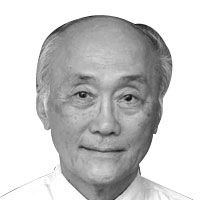The UP Faculty Center fire

Two major fires hit the University of the Philippines and University of the East and a bomb threat was received by the Ateneo de Manila University within days of each other last week. The fire damage was large and incalculable, far beyond just the physical worth of the structures and their contents, while any bomb threat creates major disruptions.
We could look at the two fires as important lessons for “fire prevention.” The three events could be unrelated. Yet in this age when terrorism is widespread, we should not dismiss any thought the events could not possibly be linked in some ways.
Immeasurable loss. For today, I simply focus on the unique tragedy of the UP Faculty Center building.
Most of those who held office in the building are professors who handle the humanities, the languages and the social sciences. Though many of them are engaged in teaching, there are those who are also involved in scholarly study and in creative work. As such, they include a supporting cast of researchers and other.
The tragic fire has evoked feelings and commentaries that are complex, sentimental, emotional and depressing. They have brought back memories and recollections of names of scholars who had worked in that building.
While the immense damage is on the current occupants, it does not mean only individual loss for each of them. There is a major collective loss, even a loss across generations of faculty.
Some 200 faculty members are said to have held office in the building. There is a sense in which some adverse impact is also on institution–building and, in consequence, on national development.
Some of that damage could include generations of scholarship and artifacts and archival materials lost forever. The fire gutted the offices of famous professors and scholars who have devoted their professional life to the university.
The losses in terms of scholarship could be both individual and communal. Some work in progress, unfinished studies, copies of old material, and individual collections of books, of artifacts and artworks could be involved. In fact, some work of generations of scholarship might have been damaged, if not totally lost.
The losses could be for the old and established as well as for the young, yet untried, but quite promising among young faculty. Of the latter, who knows if some important work of promise had been nipped in the bud by the fire?
In general, we can almost say the loss represents an extensive, if undetermined scholarly wealth for the nation ranging across disciplines. It reduces somewhat the university’s intellectual wealth by fiery accident.
A bit of history. I remember vividly how the faculty center came to be. When Carlos P. Romulo became UP president in the early 1960s, the university had many unmet needs. One of them was good faculty offices.
The prevalent faculty office setup then was a common room where the professors occupied their desks. There was no privacy. Colleagues of whatever rank or distinction could see each other across the desks, literally. This was the setting of faculty offices in the College of Liberal Arts. Such faculty arrangements were scattered in parts of what is now Palma Hall.
With commensurate ease, Romulo was able to persuade the Rockefeller Foundation not only to expand its program of support of faculty development program to the Diliman campus, but also to provide money to construct the faculty center building. The various faculties located in Palma Hall were harnessed together in one building.
Providing a single office location for all faculty serving the Palma Hall professors, the new building also changed the working mode. The professors were afforded privacy, space and air-conditioning.
By the late 1960s, the UP Faculty Center was the premier office site that housed the faculty of various disciplines in the Arts and Sciences. It became the office home of faculty in the arts and softer science disciplines.
Specifically, this meant the wide range of Liberal Arts departments working in Palma Hall: the departments dealing with English and Literature; modern languages (including Spanish); Filipino; the humanities; the social sciences – history, politics, sociology, anthropology, psychology and philosophy.
The center was not meant to provide classrooms, which were located in Palma Hall. There were a few rooms that served as seminar rooms to hold small classes.
In due time, the university in Diliman grew further. The large colleges were split. The College of Liberal Arts, in fact, became three separate entities in 1983: (1) College of Arts and Letters [CAL]; (2) College of Social Sciences and Philosophy [CSSP]; and (3) College of Science [CS].
The building belonged to the faculty of CAL and CSSP. The faculty roster also increased and departmental offerings expanded in depth and in numbers. New departmental offerings were created. New institutes and programs also sprouted within some of the traditional departments.
In the midst of this growth, the UP Faculty Center has remained the same in size. Though large for its faculty complement when it was built, it had become too crowded by then.
Personal story and impressions. I was witness to these developments. In all my years as a student, my classes were in Palma Hall. As faculty member, I was with Economics, which belonged to a separate academic unit of the UP. My familiarity continued even as I served as regent for 11 years or worked in government.
My late wife, Dr. Loretta Makasiar Sicat, was a member of the Political Science faculty and I often picked her up and accompanied her to her office in the third floor. Thus, I have imbibed and almost worked in the UP Faculty Center building.
Over time, even the relatively commodious atmosphere of the faculty center during the 1970s and the 1980s became gradually cramped, space got tighter even as some faculty rooms were doubled up as administrative offices.
Thus, the faculty rooms became crowded as the numbers of faculty grew. Moreover, as students often wanted to be closer to their faculty, students also began crowding the corridors much more than before.
At the time of its burning, the faculty center was one big cramped facility.
My email is: gpsicat@gmail.com. Visit this site for more information, feedback and commentary: http://econ.upd.edu.ph/gpsicat/
- Latest
- Trending






























